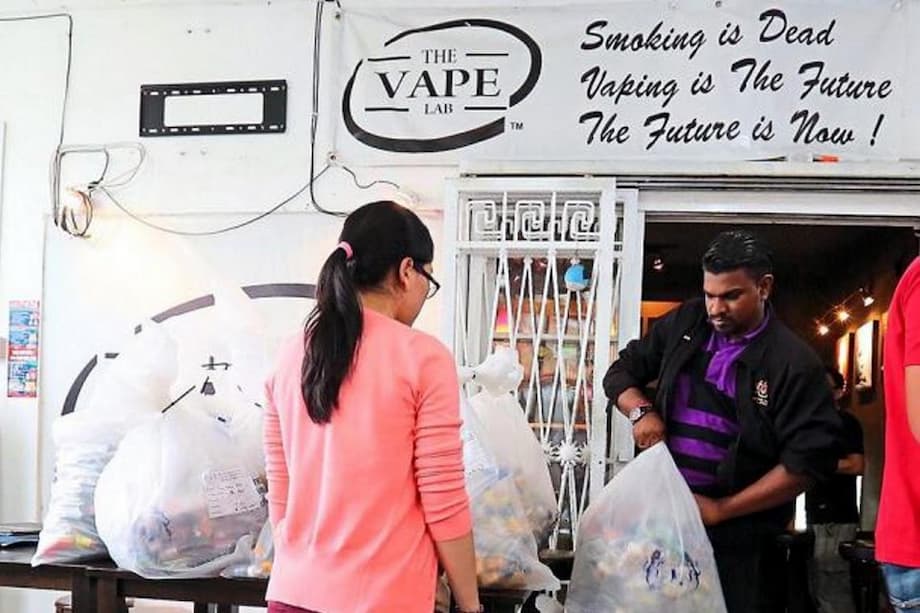What is changing and when
Malaysia is preparing to ban vaping nationwide in phases. The Health Ministry says the first stage will target open system devices that can be refilled, before moving on to all vape products. Policymakers frame the move as a response to rising youth use, reports of illicit substances in vape liquids, and a thriving cross border trade that links Malaysian sellers to demand in Singapore, where vaping is already illegal. A Cabinet memorandum is being drafted to set out scope and timing, and the ban would align Malaysia with several Southeast Asian neighbors that already prohibit electronic cigarettes.
- What is changing and when
- Why the debate is so heated
- Youth vaping and public health data
- How the market got here
- Cross border effects and the Singapore connection
- What a ban means for enforcement
- Electronic waste and fire risks from disposable vapes
- How a phased ban could work in practice
- Regional picture and policy lessons
- What to Know
Health Minister Dzulkefly Ahmad has said a technical committee is completing a detailed report on the prohibition. He added that the ministry will present a full memorandum to the Cabinet once consultations with economic and legal agencies are complete.
He signaled that the decision is now about timing, not intent.
“It is no longer a question of if we ban, but when we ban.”
While Parliament passed the Control of Smoking Products for Public Health Act in 2024 to regulate nicotine products, the law stopped short of a full prohibition. The ministry then stepped up inspections and seizures nationwide, while several states tightened local rules on retail licensing. The proposed national ban would replace this patchwork with a single standard.
Phased rollout, open systems first
Open system vapes are reusable devices that allow users to refill tanks with liquids of their choice. That flexibility has made them popular with experienced users, and it also creates more room for misuse because almost any liquid can be poured in. Closed system products are usually disposable, prefilled and more convenient for new or occasional users.
Dzulkefly said the first phase will focus on open systems, then expand to all products. Officials argue that a phased approach gives enforcement teams time to scale up checks, engage retailers, and close loopholes in areas such as online sales and courier delivery.
Why the debate is so heated
The announcement has drawn sharp responses. Health advocates see a ban as a way to prevent a new generation from becoming dependent on nicotine and to avoid future medical and social costs. Groups representing vapers and retailers warn that prohibition could push sales into the shadows, making products less safe and harder to control.
Health case for a ban
Consultant paediatrician and child disability advocate Datuk Dr Amar Singh HSS backs a national ban. He points to widespread promotion near schools, youth perceptions that vaping is harmless, and a fast rising user base. National survey data showed that in 2022, 14.9 percent of secondary school students aged 13 to 17 were using electronic cigarettes, equal to almost 400,000 teens then. He believes that number has grown.
Dr Amar says the health risks for young people are real and preventable.
“We need a national ban on vape products if we are serious about protecting our youth. Otherwise, we risk creating a new generation of teen addicts.”
He also warns that many young people turn to vaping as a coping tool for stress and anxiety, yet regular use can worsen mood problems, increase impulsivity, and entrench addiction. For the ministry, reports of vape liquids laced with tetrahydrocannabinol, fentanyl, or cocaine add to the case for a strict line. Singapore has recently reframed vaping as a drug control issue and raised penalties.
Concerns from retailers and vapers
Retailers and pro vape groups argue that a total ban will repeat the story of illegal cigarettes in Malaysia. They say closing the legal market for products that millions already use would hand demand to illicit suppliers. They prefer strict regulation instead of prohibition, such as licensing, approved product lists, nicotine limits, and controls on where devices can be sold.
A survey commissioned by the Malaysian Vapers Alliance reported that 74 percent of respondents fear a ban will enlarge the illicit market, while 80 percent worry unregulated products would be unsafe. Shop owners also question whether enforcement can keep up, and warn that the result could be more untested liquids, more online sales, and riskier behavior.
Youth vaping and public health data
The youth data has focused the national debate. A 2022 government survey estimated that nearly 15 percent of teens in secondary school were already using electronic cigarettes. Flavored liquids, trend driven designs, and fast moving online marketing have made experimentation easy. School administrators and parents describe a rising number of incidents outside school gates and in nearby retail strips.
Nicotine exposure during adolescence can prime the brain for dependence, impair attention and learning, and shape behavior. Health professionals also flag respiratory complaints and the risk of acute lung injury that has been linked to vaping in some countries. Cases are rare in Malaysia, but the risk rises when liquids contain unknown chemicals or when users modify devices without guidance.
Researchers note that the academic literature in Southeast Asia is still limited. Most studies are small and many rely on non peer reviewed material. That gap does not remove concern, because the combination of high nicotine concentrations, youth curiosity, and online sales creates a difficult environment for control. A pre emptive approach is favored by several countries in the region.
How the market got here
Malaysia’s vape market grew quickly after 2023, when the government removed liquid nicotine from the Poisons List to impose an excise tax. That decision effectively legalized nicotine in vape liquids and drew new investment and brands. By 2023, the market was valued at about 3.48 billion ringgit, and an estimated 1.4 million Malaysian adults were using electronic cigarettes.
In 2024, Parliament passed the Control of Smoking Products for Public Health Act. The law set rules for product registration, banned retail displays, vending machines and online sales, and capped nicotine strength. Lawmakers dropped the proposed generational endgame clause that would have phased out sale and use for those born after a certain year.
Enforcement then picked up. National sweeps led to seizures of unregistered liquids and devices. The number of registered brands fell from more than 3,200 to about 390, and registered variants fell from about 6,800 to 2,794. Several state governments also took matters into their own hands.
Johor froze new business licences for vape retailers as far back as 2016. Kelantan, Terengganu, Perlis, Kedah and Pahang moved to restrict sales by stopping new or renewed licences. As of August 2025, Terengganu and Perlis have implemented full bans at the state level. A national prohibition would replace these uneven measures with a single rule.
Cross border effects and the Singapore connection
Singapore has banned vaping since 2018 and recently tightened its approach with higher penalties and a focus on the drug control dimension. That has not ended demand. Malaysian shops near the border, especially in Johor Bahru, report steady business from Singaporeans. Even with a licence freeze, supply persists through existing shops and online sellers.
Singapore recorded 19 large smuggling cases at its checkpoints in 2023, seizing around 90,000 devices and related items. From April to June this year, more than 3,700 people were caught possessing or using vapes, a jump from the prior quarter. The tug of war across the Causeway has turned vaping into a regional enforcement challenge.
A Malaysian ban will not remove cross border demand overnight. It could reduce open retail access, yet online sellers and informal couriers may adapt. Coordinated customs checks, data sharing, and action against payment and delivery channels will be needed if authorities want to suppress the trade.
What a ban means for enforcement
A prohibition requires a different enforcement posture than regulation. Inspectors will be looking to shut down sales and seize stock, not to check compliance with labelling rules. Online platforms, third party logistics providers, and cross border sellers will play a central role, since buyers can evade street level checks with a few taps on a phone.
Malaysia’s experience with illegal cigarettes shows how tough this can be. Illegal tobacco has taken an outsized share of the market for years. Analysts estimate that un taxed, illegal products make up more than half of cigarette sales. A similar pattern for vaping is the industry’s core warning.
Supporters of the ban argue that a clear rule will make enforcement easier to communicate and carry out. They also point to evidence of contaminants in some vape liquids and to the targeting of young people with high nicotine strengths and sweet flavors. For them, the priority is prevention and the long term reduction of medical costs.
Either way, enforcement capacity will decide whether a prohibition works. That includes more inspections, faster lab tests of seized liquids, and firm action against large suppliers. It also includes public campaigns that explain penalties and promote quitting supports for current users.
Electronic waste and fire risks from disposable vapes
The debate is not only about health. Disposable vapes are also an electronic waste concern. The devices carry small lithium ion batteries and leave behind nicotine residue, metals and other chemicals. When tossed into regular bins, they can cause fires or contaminate the environment.
Malaysia’s Fire and Rescue Department has warned of the danger from batteries in the waste stream. Director general Nor Hisham Mohammad said the heat and damage these cells experience during disposal can trigger fires.
“If tossed into regular bins, they can cause fires in garbage trucks or landfills.”
Waste management specialists add that most pods look like common plastic items, so they are unlikely to be sorted for proper recycling. Theng Lee Chong says the plastic casings and the hazardous components can contaminate soil and water if they end up in landfills. Advocates propose take back systems at retailers and an extended producer responsibility model so that manufacturers help fund safe collection and disposal.
Electronic recycling firms say the concept works. One company reports that it has already collected and recycled thousands of pods through a take back program, then transferred them with batteries to licensed facilities for processing that follows environment agency guidelines.
How a phased ban could work in practice
Focusing on open systems first addresses the products that are easiest to modify and the liquids most prone to tampering. Phasing gives the authorities time to refine rules, train enforcement teams, and reach retailers and logistics companies with clear guidance.
The Health Ministry is drafting the Cabinet memorandum that will set out the phases and timelines. Dzulkefly has said he will not pre empt the Cabinet’s decision. He has also said the Prime Minister supports the initiative and wants the ministry to get the details right.
For users and shop owners, the key questions will be what counts as banned activity, how large the fines are, and how the changes will be applied to online marketplaces. The ministry has urged patience as details are finalized. People who use vaping to quit smoking can speak to their doctors about approved cessation therapies.
Regional picture and policy lessons
Southeast Asia has a patchwork of rules for electronic cigarettes. Singapore, Brunei, Cambodia and Thailand have bans in place, while Laos has moved to restrict sale and import. The Philippines, Vietnam and Hong Kong regulate use, while Indonesia and Myanmar have had weaker or fragmented rules. Public health research in the region suggests that early, firm action reduces youth uptake and makes enforcement simpler.
Policy shifts do happen. Thailand decriminalized cannabis in 2022, then faced a wave of unregulated sales and is now moving to recriminalize non medical use. Malaysia’s leaders say they want to avoid a similar cycle on vapes, where rapid growth outpaced rules and enforcement. A clear national policy is meant to close the gap.
What to Know
- The government plans a nationwide ban on vaping, rolled out in phases. Open system devices will be targeted first, with all products to follow.
- The Health Ministry is drafting a Cabinet memorandum that will set out details and timing. The minister says it is a matter of when, not if.
- The 2024 Control of Smoking Products for Public Health Act regulates nicotine products but does not prohibit them. Enforcement since late 2024 has reduced registered brands from more than 3,200 to about 390.
- Malaysia’s vape market was worth about 3.48 billion ringgit in 2023, with an estimated 1.4 million adult users.
- Teen vaping is widespread. In 2022, 14.9 percent of secondary school students were using electronic cigarettes.
- Authorities cite reports of illicit drugs mixed into vape liquids as a major concern, alongside youth addiction risks.
- State rules differ. Johor froze licences for vape shops in 2016. Terengganu and Perlis have adopted full bans.
- Cross border demand links Malaysian sellers to Singapore, where vaping is illegal. Singapore recorded 19 big smuggling cases and around 90,000 devices seized in 2023, and caught more than 3,700 users in one quarter this year.
- Vaper groups and retailers warn a ban could expand the black market. Health advocates argue prevention and clear rules will protect youth and reduce future costs.
- Disposable vapes add to electronic waste and fire risks, prompting calls for take back programs and producer responsibility schemes.




